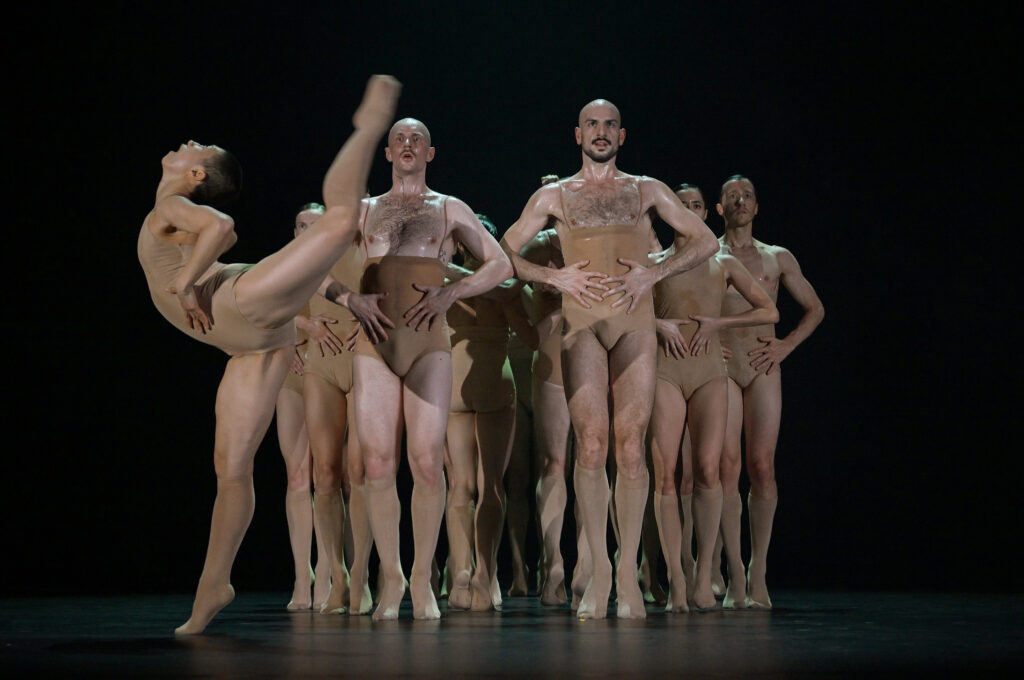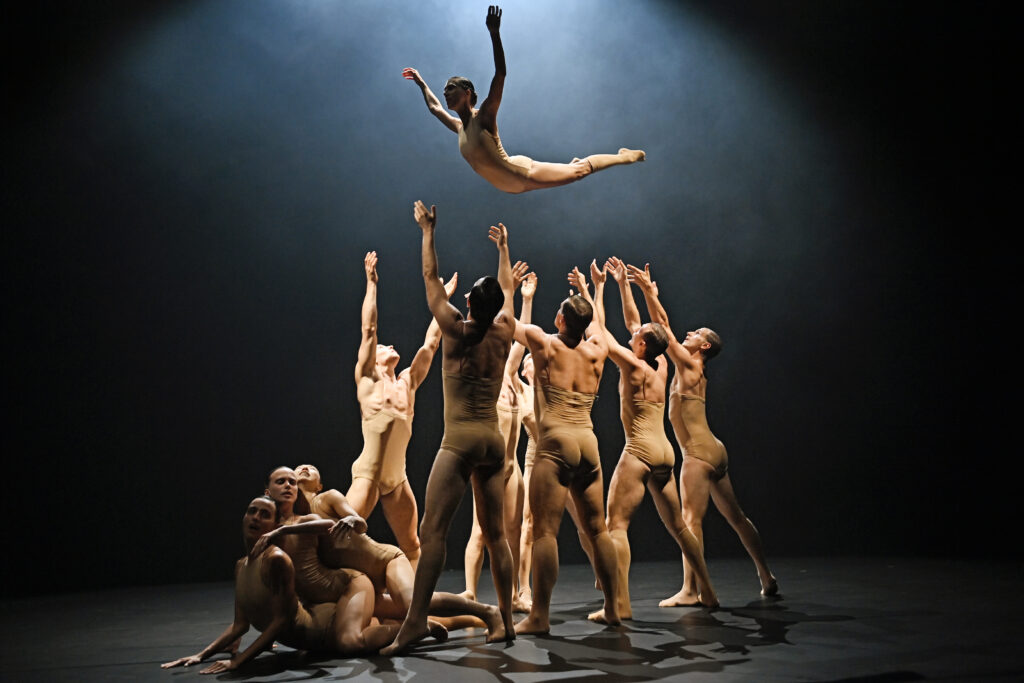A must see, but not for the faint of heart: tanzmainz’s indescribable Soul Chain
Soul Chain, the award-winning work by Germany's tanzmainz, is like nothing you've ever experienced before.
Imagine, if you will, that the replicants from Blade Runner mated with members of the South African band Die Antwoord (specifically in their video I fink u freeky), and their offspring went back in time to the 1970s and were featured on the TV show Soul Train. Or imagine that somewhere there is a factory that makes human beings, and it’s been taken over by insane Dada artists who are assembling the humans from bits and pieces of 1940s storefront window mannequins and then letting them out into the world en masse.
Neither of these images can fully convey the mindfuck that is Soul Chain. An award-winning piece of choreography by Sharon Eyal with co-creator Gai Behar on a pounding electronic soundtrack by DJ Ori Lichtik, Soul Chain features 17 dancers from German dance company tanzmainz. Dressed in flesh-coloured body suits and matching knee-high socks, the dancers first appear one by one, two by two, and three by three. They hold themselves rigidly, taking tiny steps on demi-pointe, that is, on the balls of their feet, as if wearing high heels but without the actual shoes for support. They look like mannequins come to life, learning how to walk, perfectly in sync with each other and the pulse of the music, their movements limited to tiny steps as they cross the stage diagonally. Occasionally one or another of them will alter their rigid bearing, as if there is a bit of a glitch in the program, as if they haven’t quite been put together properly: a torso will collapse in on itself, an arm will not quite be in the right place.
Eventually the dancers all gather on stage, and just when you’ve begun to wonder if the whole work will be based on these tiny footsteps and highly restrained movements, things start to develop. Gradually the mannequins appear to learn to move. Always on demi-pointe, the dancers elaborate on a vocabulary of movements, many of which seem to have been drawn from old Soul Train footage, but abstracted out into deconstructed moves devoid of actual soul. As if Martians had watched Soul Train and tried to reconstruct the dance language of soul and funk out of its constituent parts but got it all a little wrong. You want pelvic thrusts? You get pelvic thrusts, but exaggerated to a point somewhere between terrifying and hilarious: wide deep stances, on demi-pointe, humping as if their lives depend on it. You want a funky wiggle? You get a low-down, slightly awkward hunched over somewhat painful looking twist. You want a rave or a mosh pit? You get dancers flung high into the air and then piled up in an equally animated heap of bodies.

From the time the dancers have all gathered on stage until the end of the hour-long work, they often stay close together in a sort of mass of pulsing, vibrating, pelvic-thrusting, raving bodies. They move more or less as a collective, often writhing sexually or mock-violently, but with no bonding, no sentimentality, no emotionality. There are always one or two outliers, but they are never ostracized: no-one doesn’t belong. For example, as the crowd collectively arches backwards or bends forward, a solitary standing figure with his fist raised will remain in the back, and perhaps another set of waving arms will be seen behind him. Alternatively, or additionally, a solo dancer may be off to the side doing her own thing. There is one point when the dancers are all in a row, very slightly stepping from one foot to the other, barely perceptibly pulsing in unison to the beat: one has to do a double take to verify that it’s the dancers pulsing, and not the backdrop—that’s how unified they are in even the most subtle moves.

As the piece draws to a close, one lone figure in the centre of the group pulses slightly, his head bobbling a bit from side to side, as if it’s not quite attached to his neck properly, like a bobblehead on a car dashboard. All around him the other dancers are moving in a much less constrained way. For the entire finale, this subtle bobblehead movement grows and grows, his head eventually bobbling wildly from side to side as the pulsations increasingly animate his still rigid body. He is restrained, but with an energy that is almost impossible to contain, as all around him bodies flail wildly to the beat. The effect is literally indescribable. The curtain comes down on the writhing mass.
Tanzmainz’s Soul Chain is at Théâtre Maisonneuve 24, 25, 26 January at 8pm. Tickets here.






